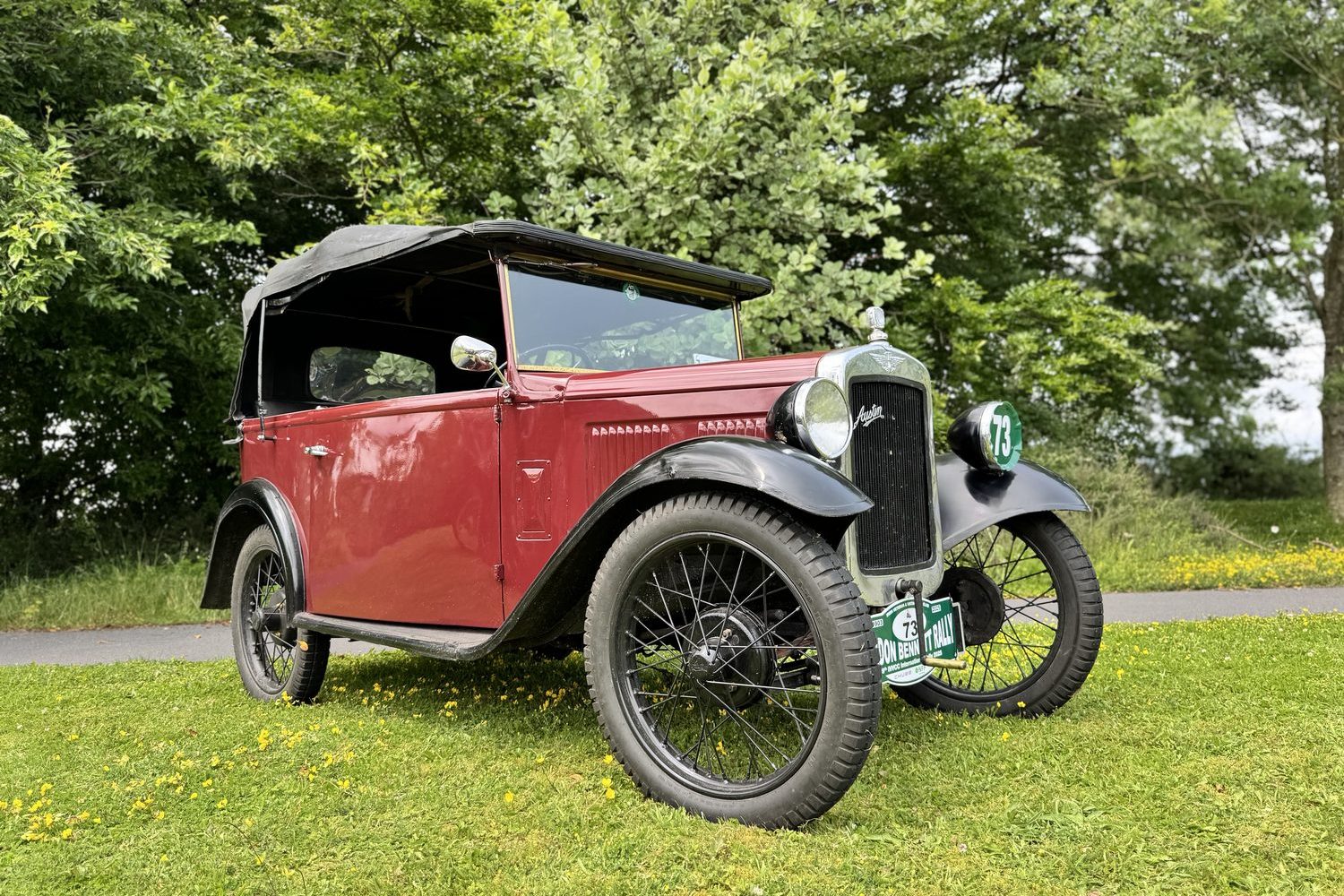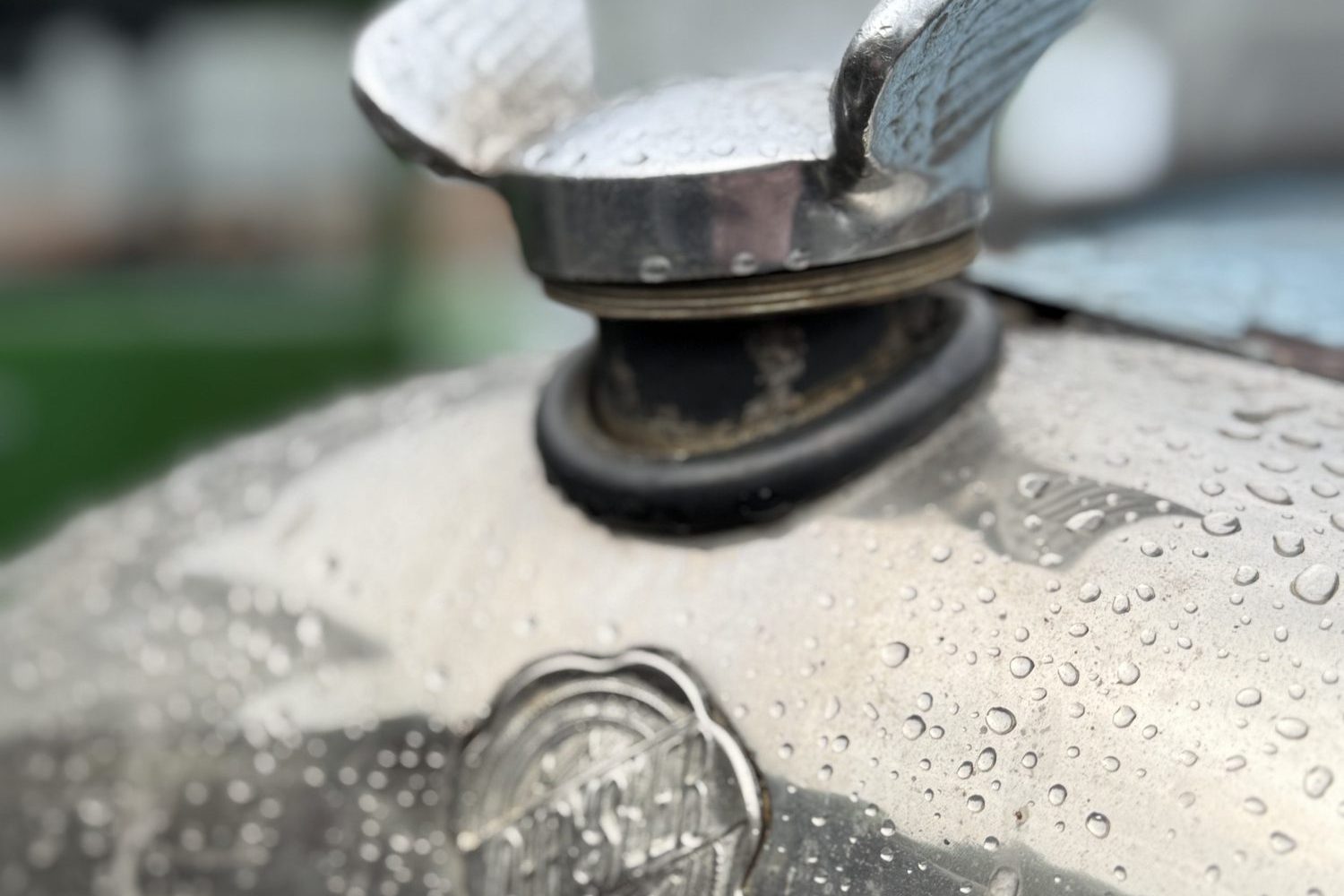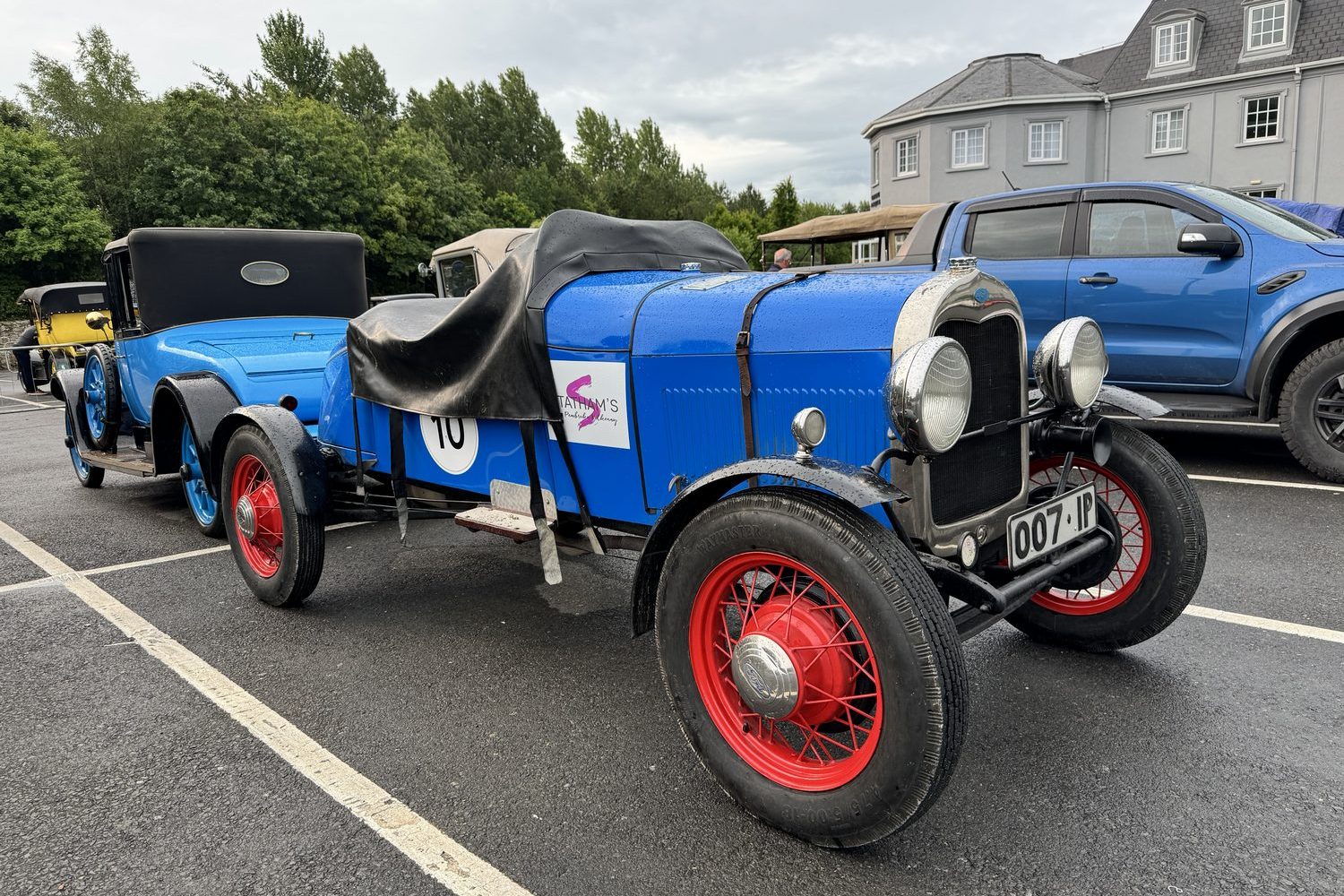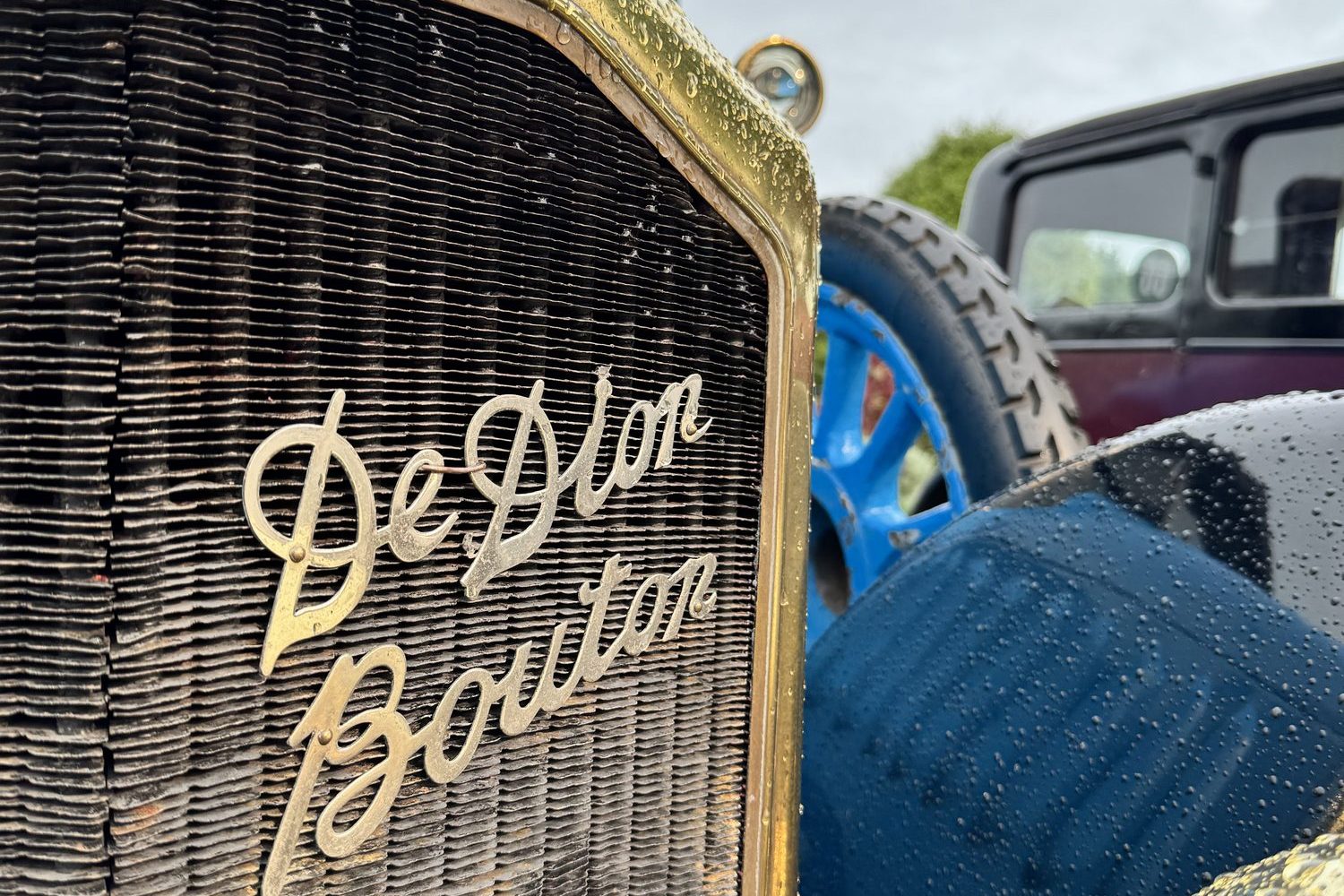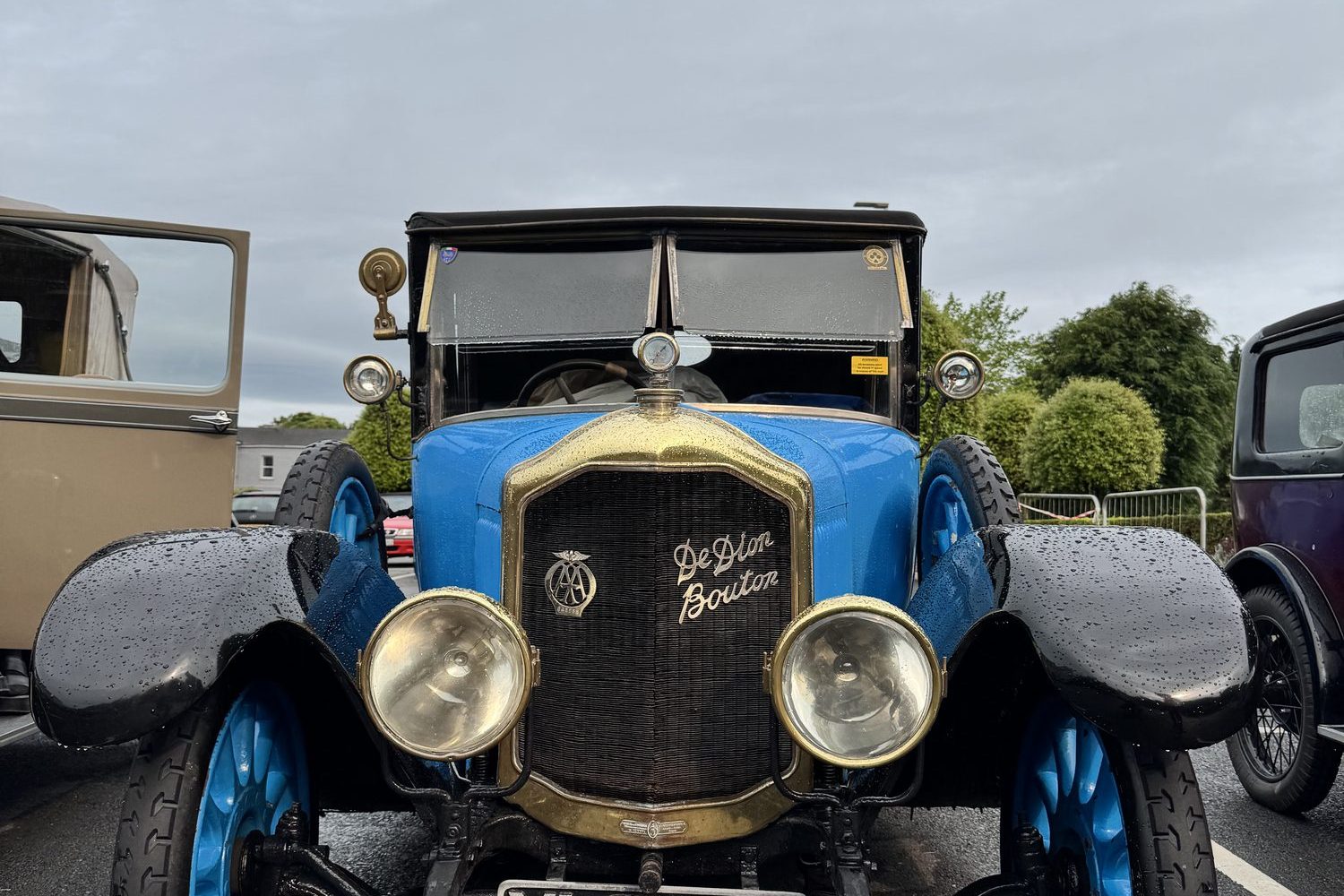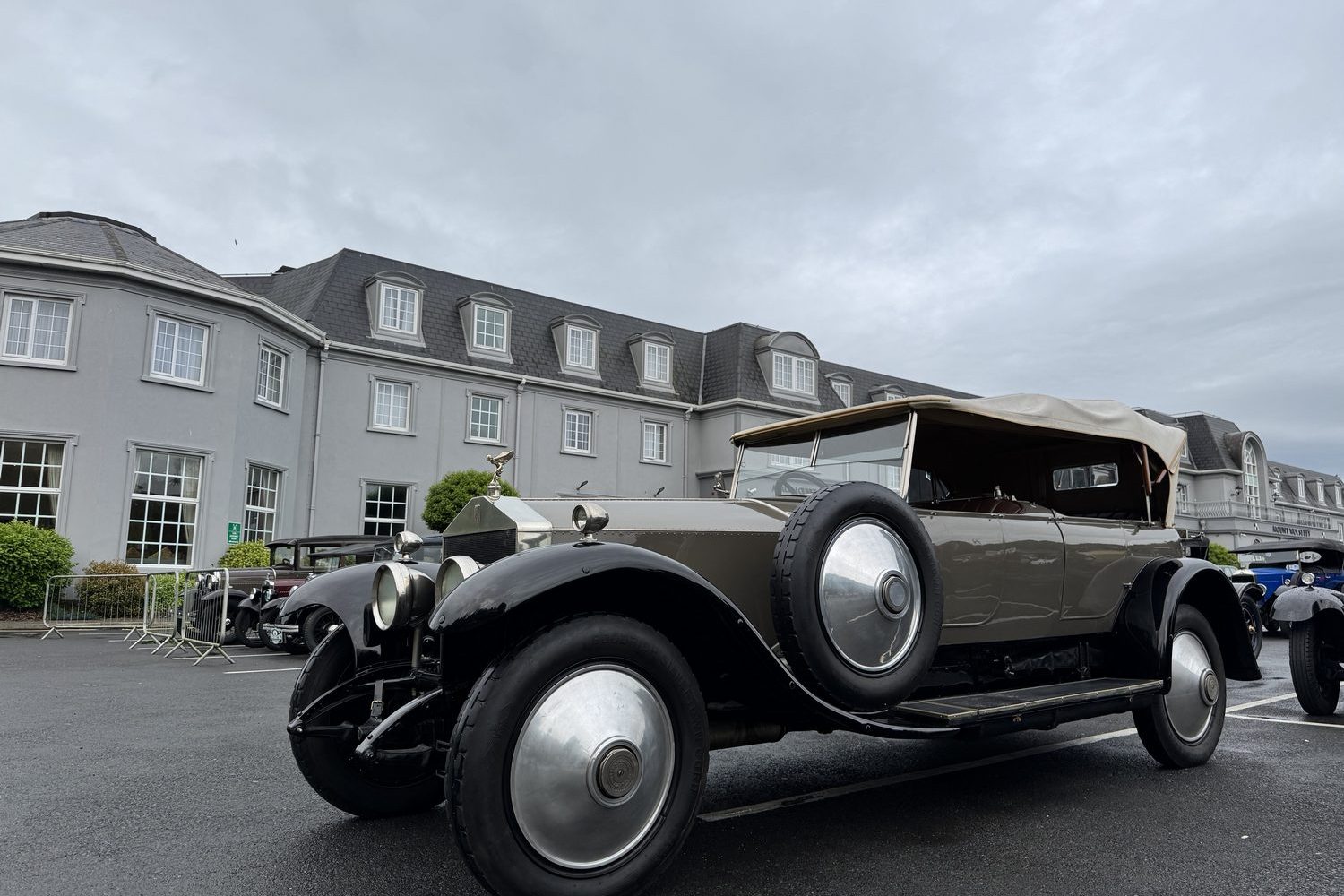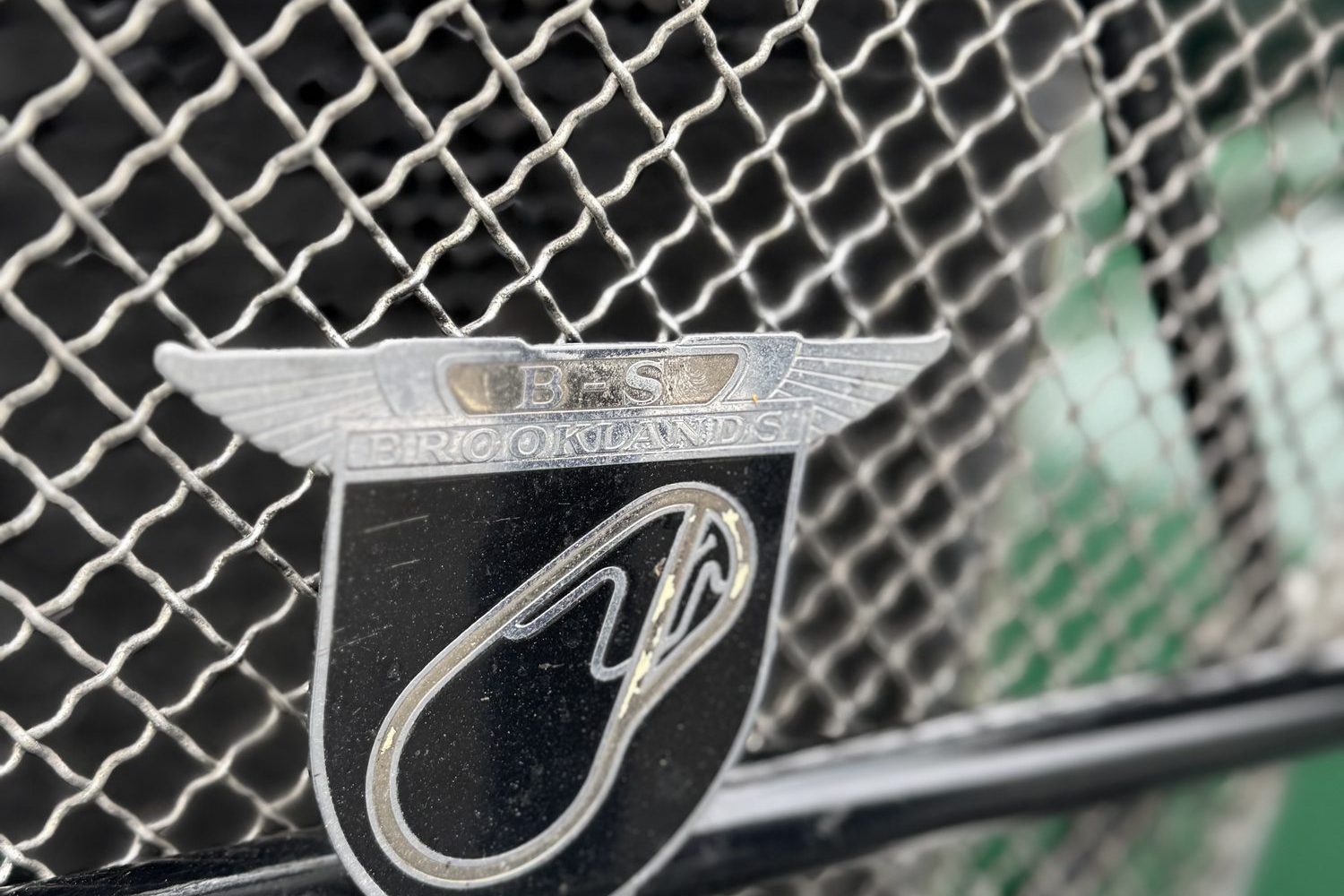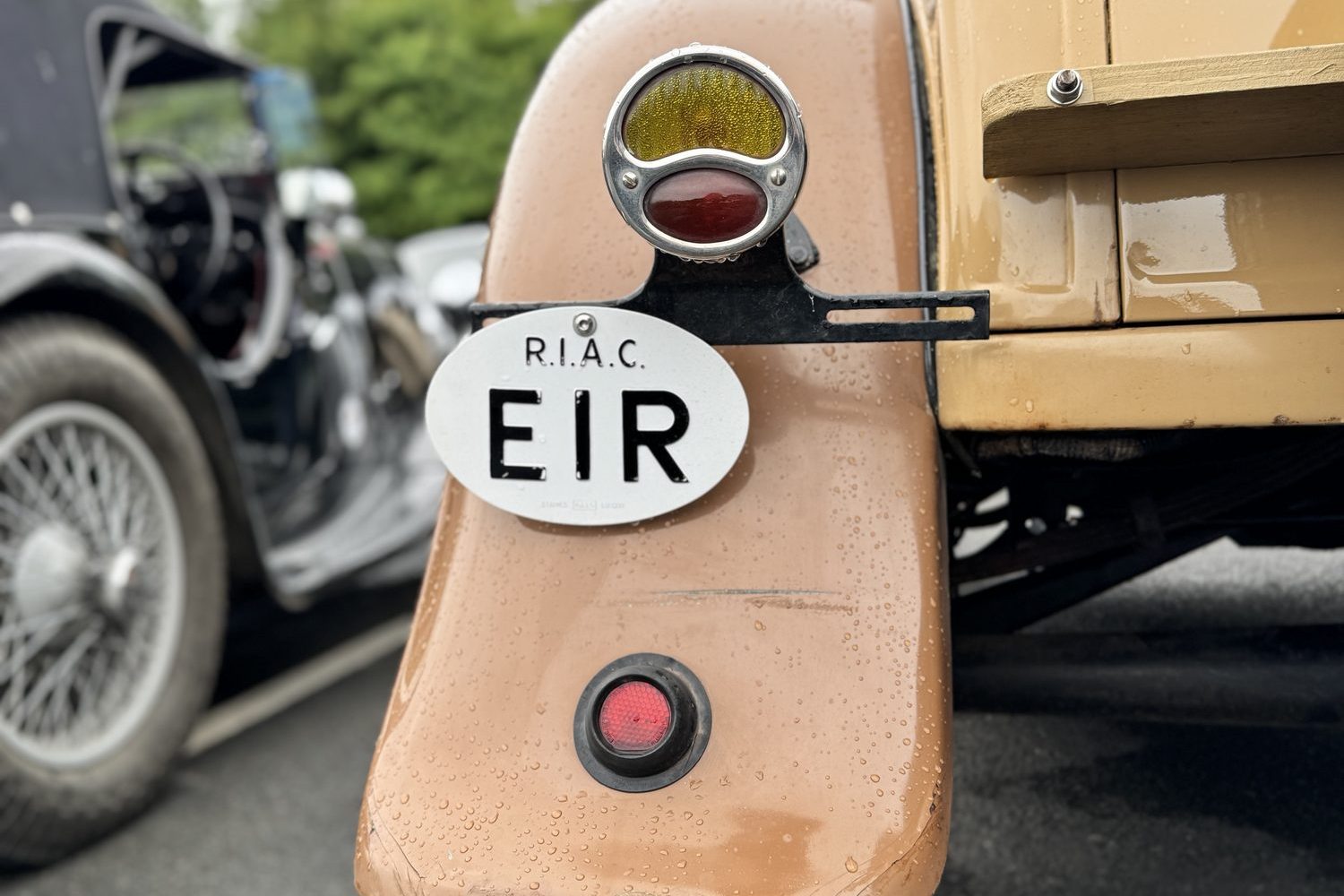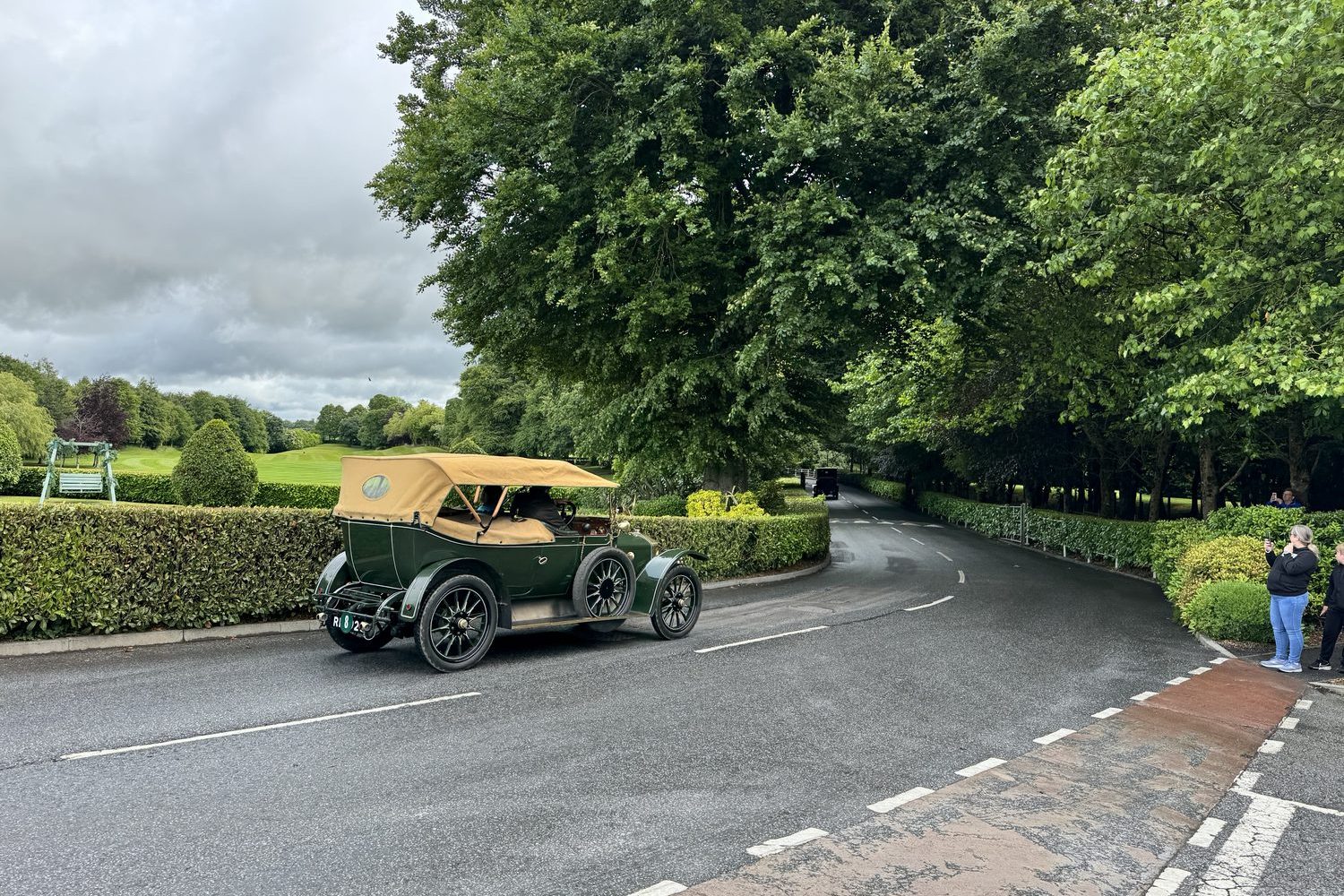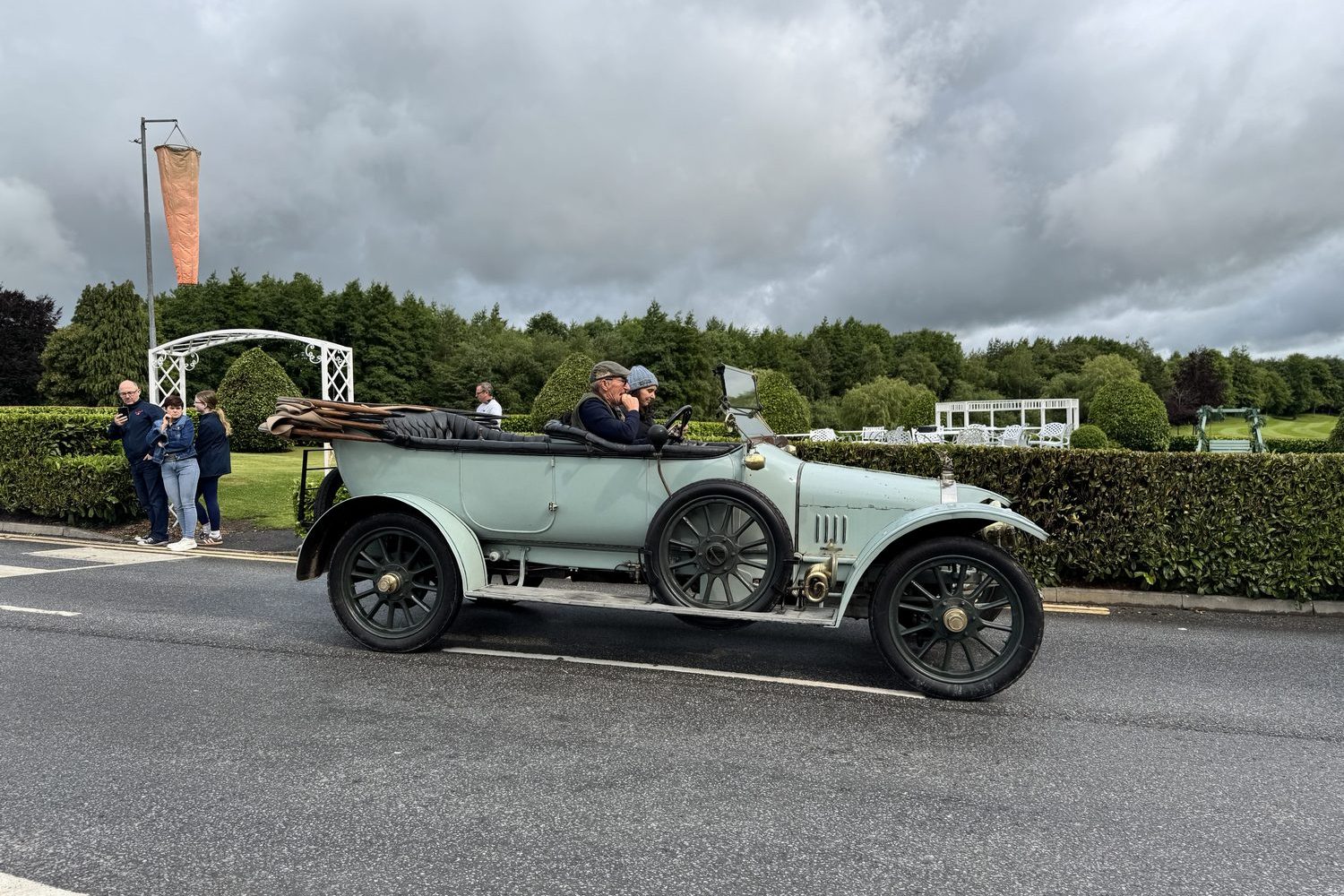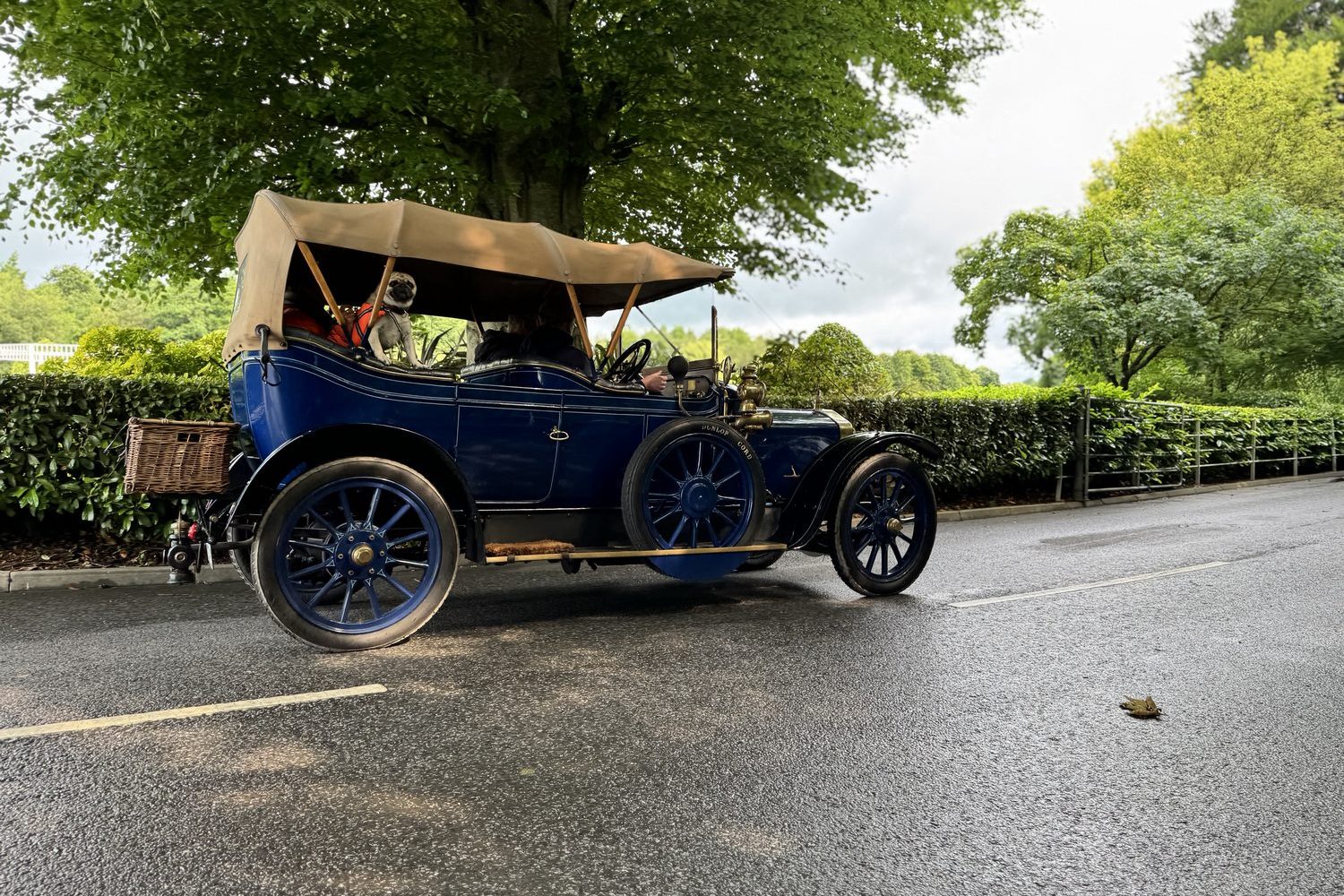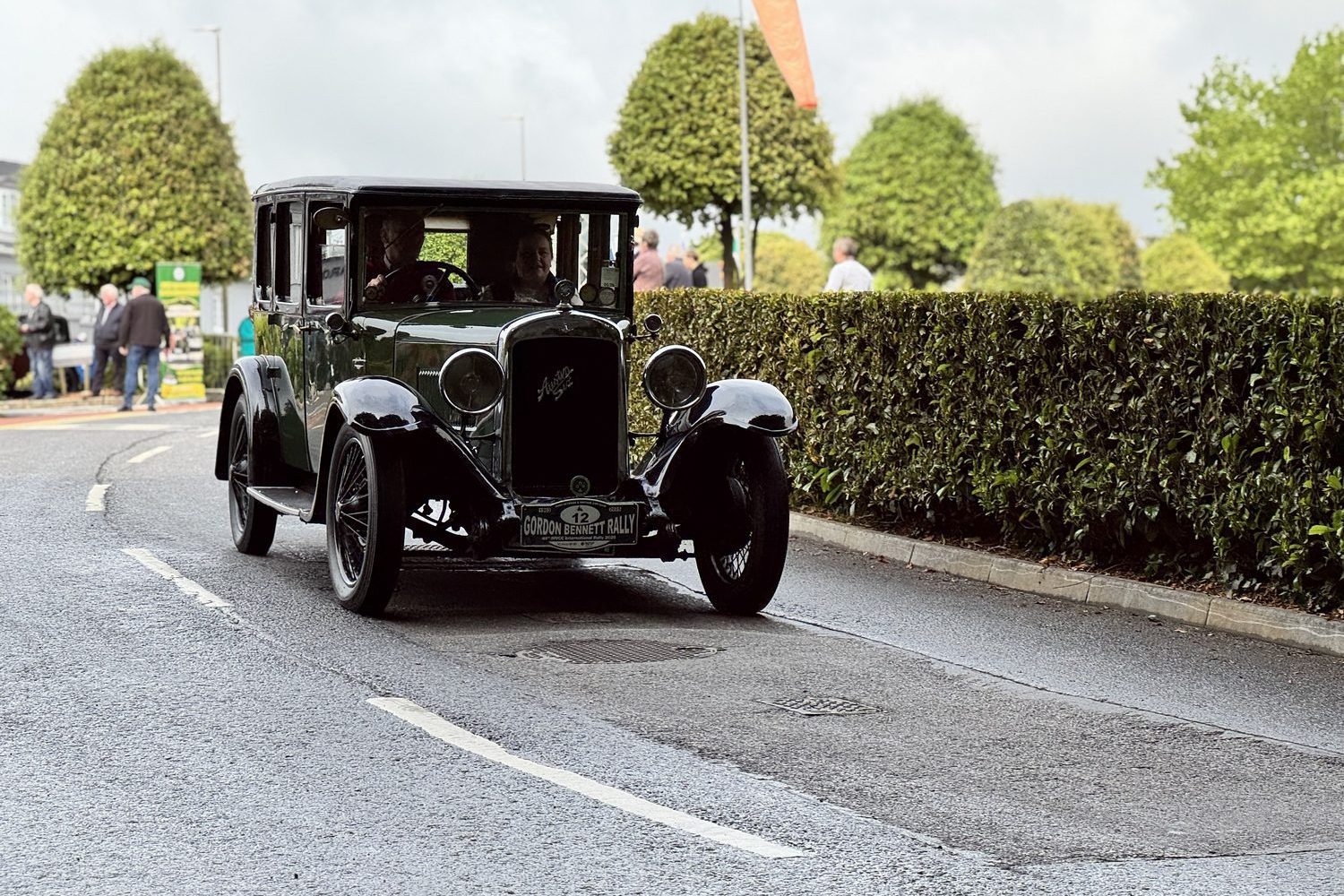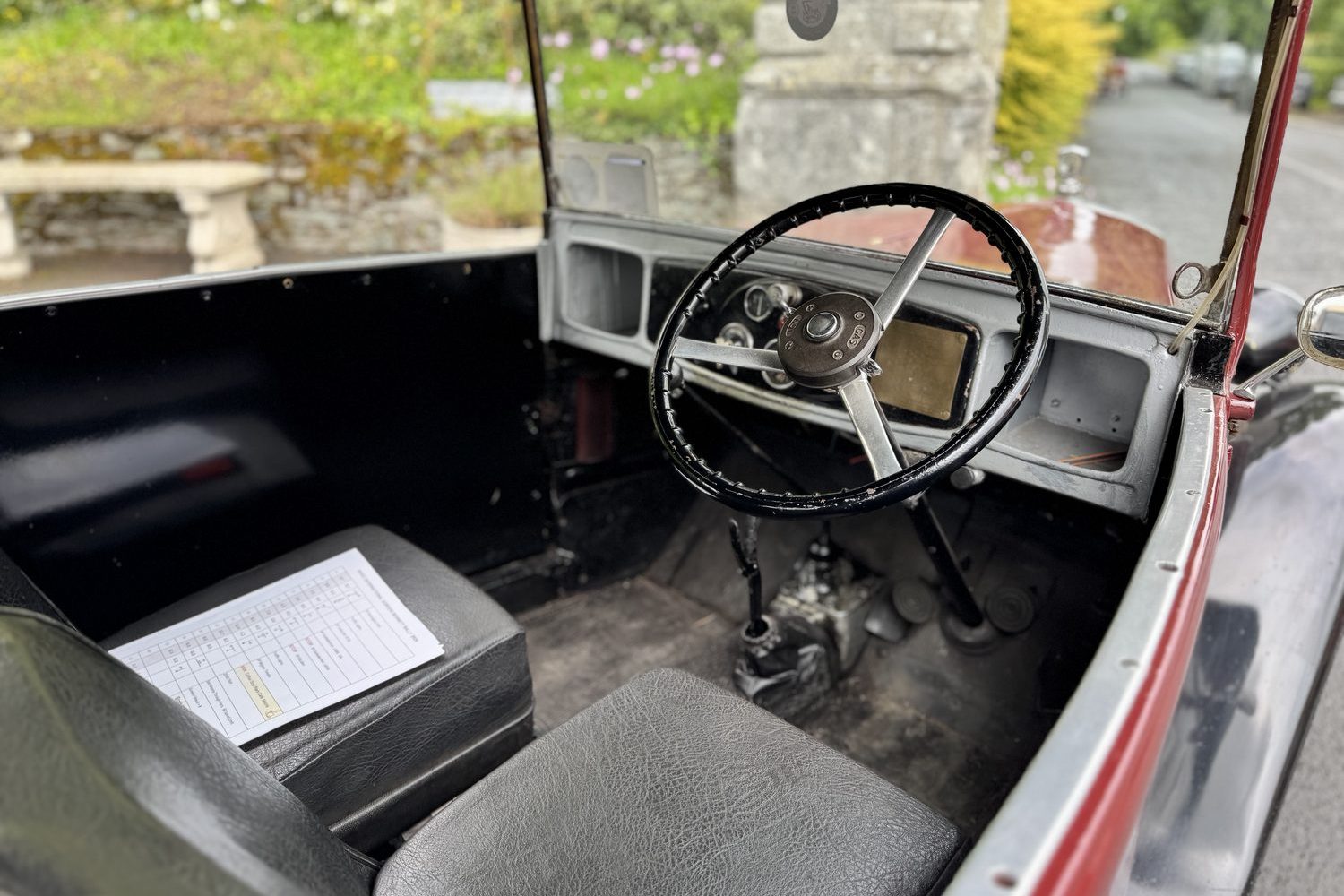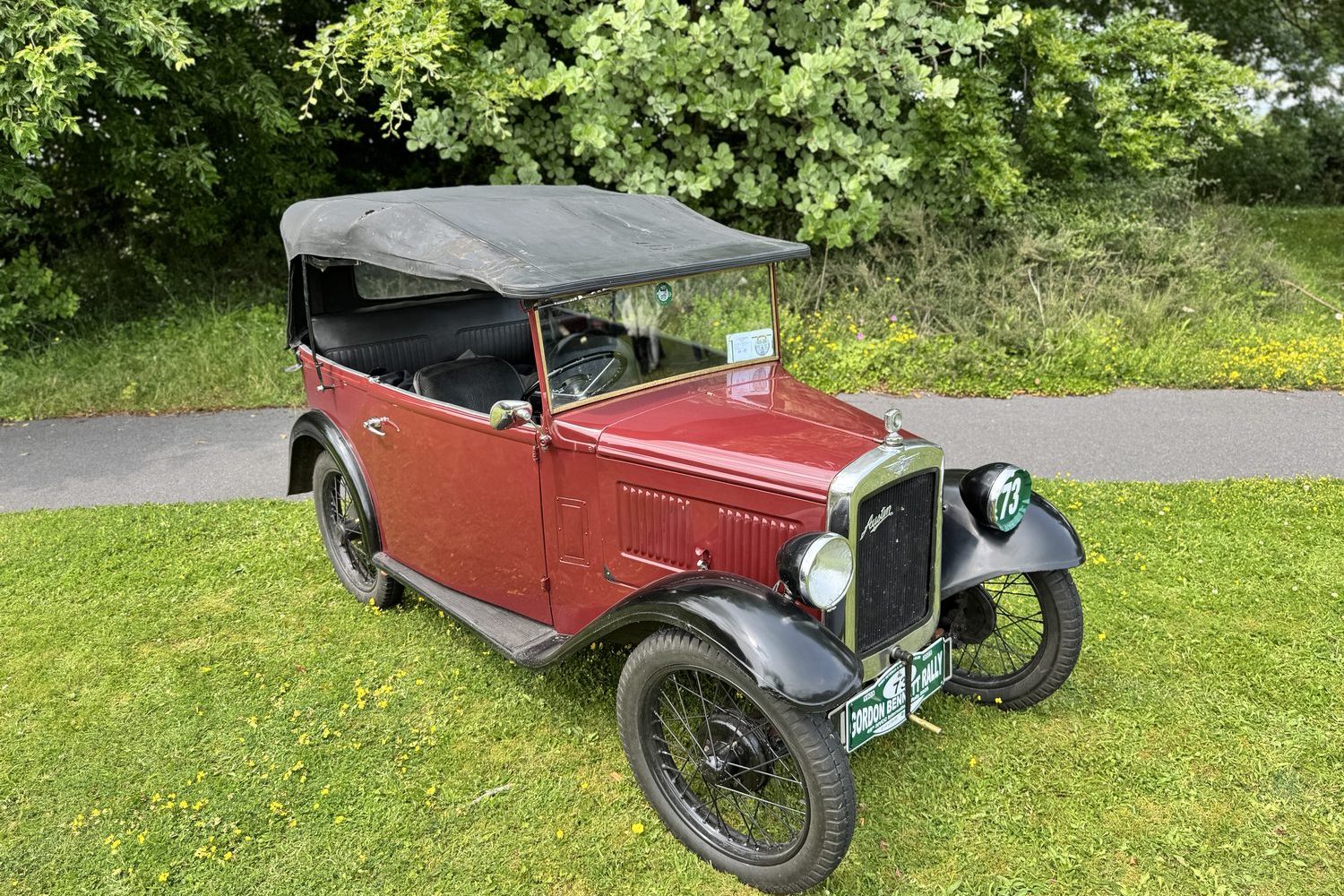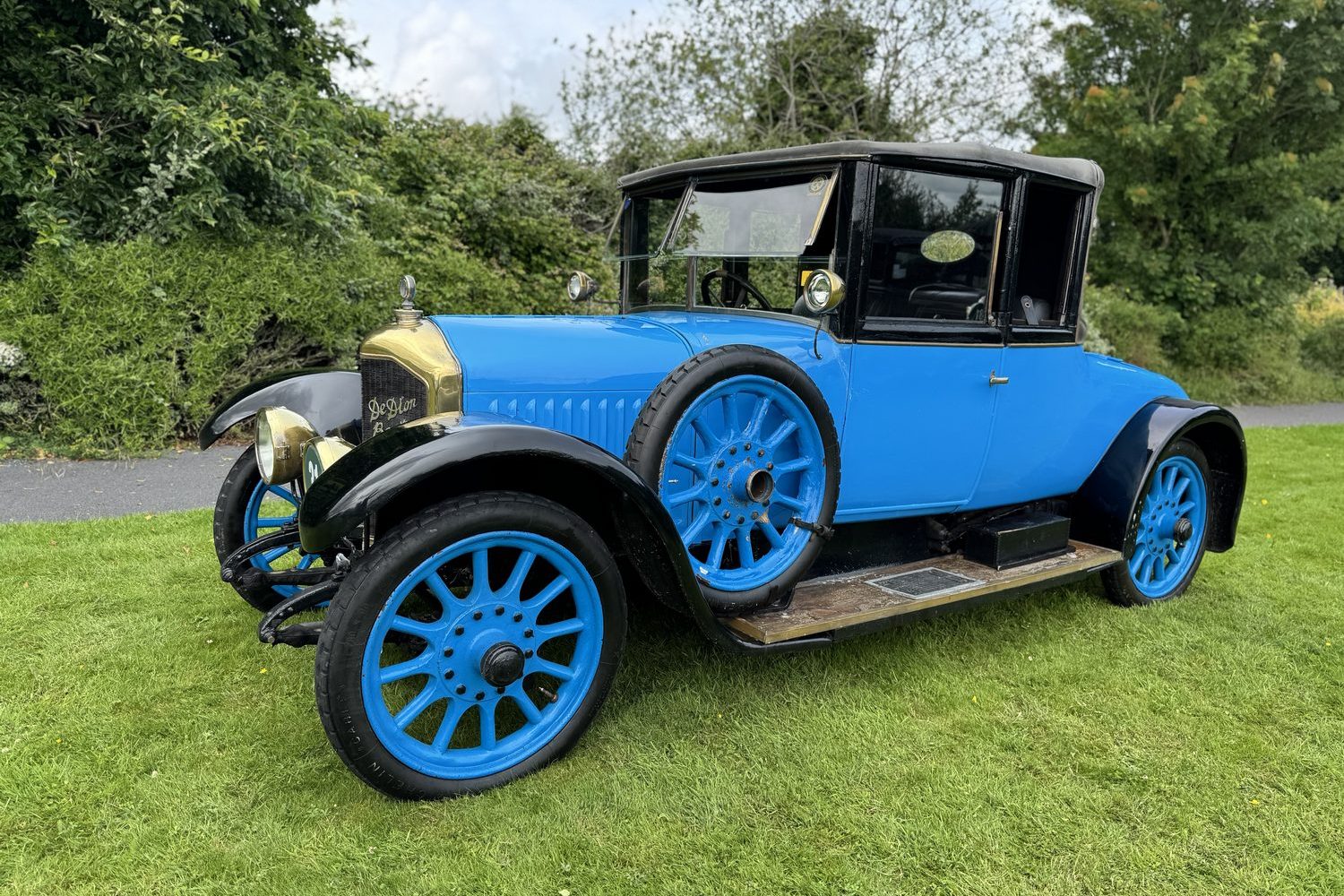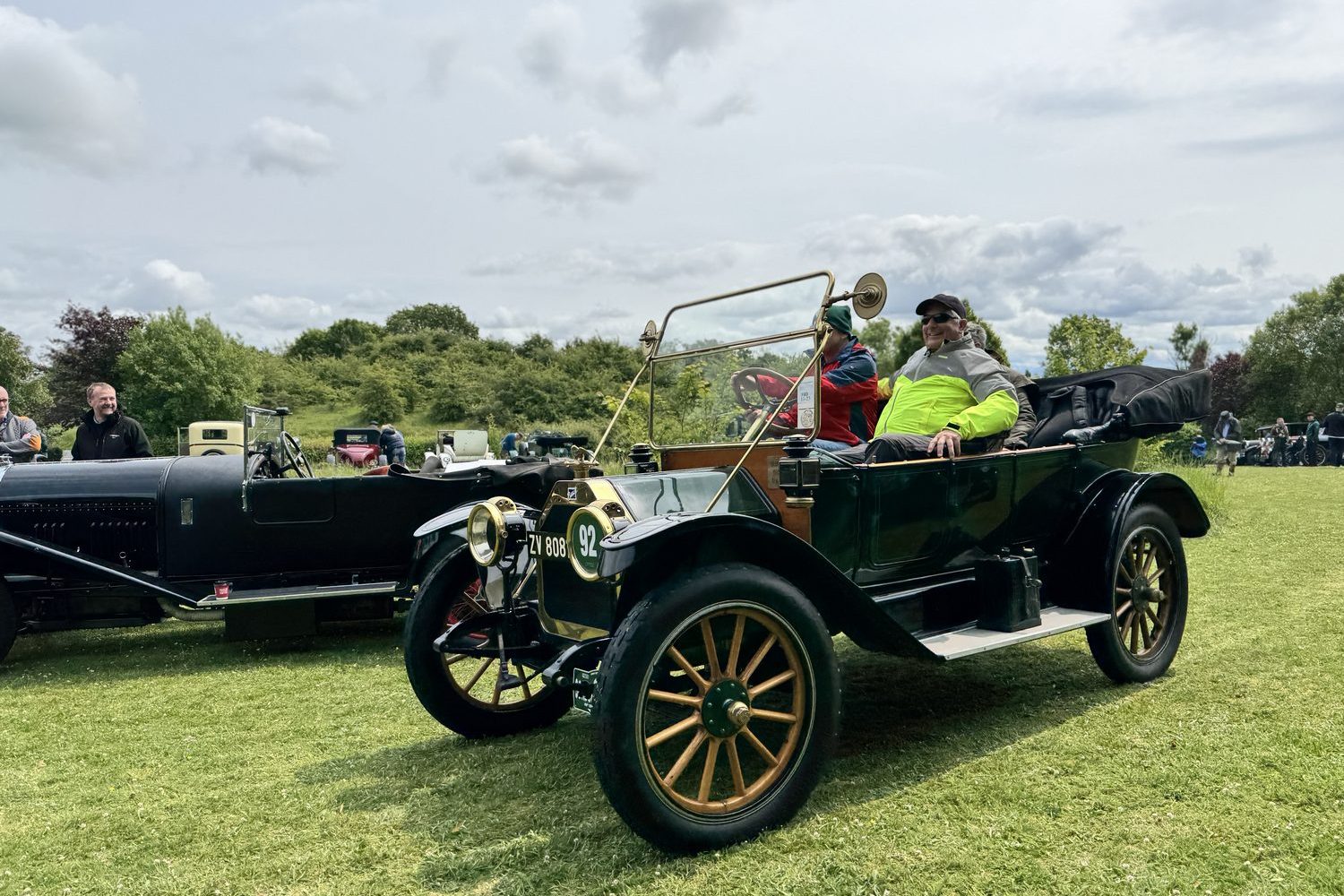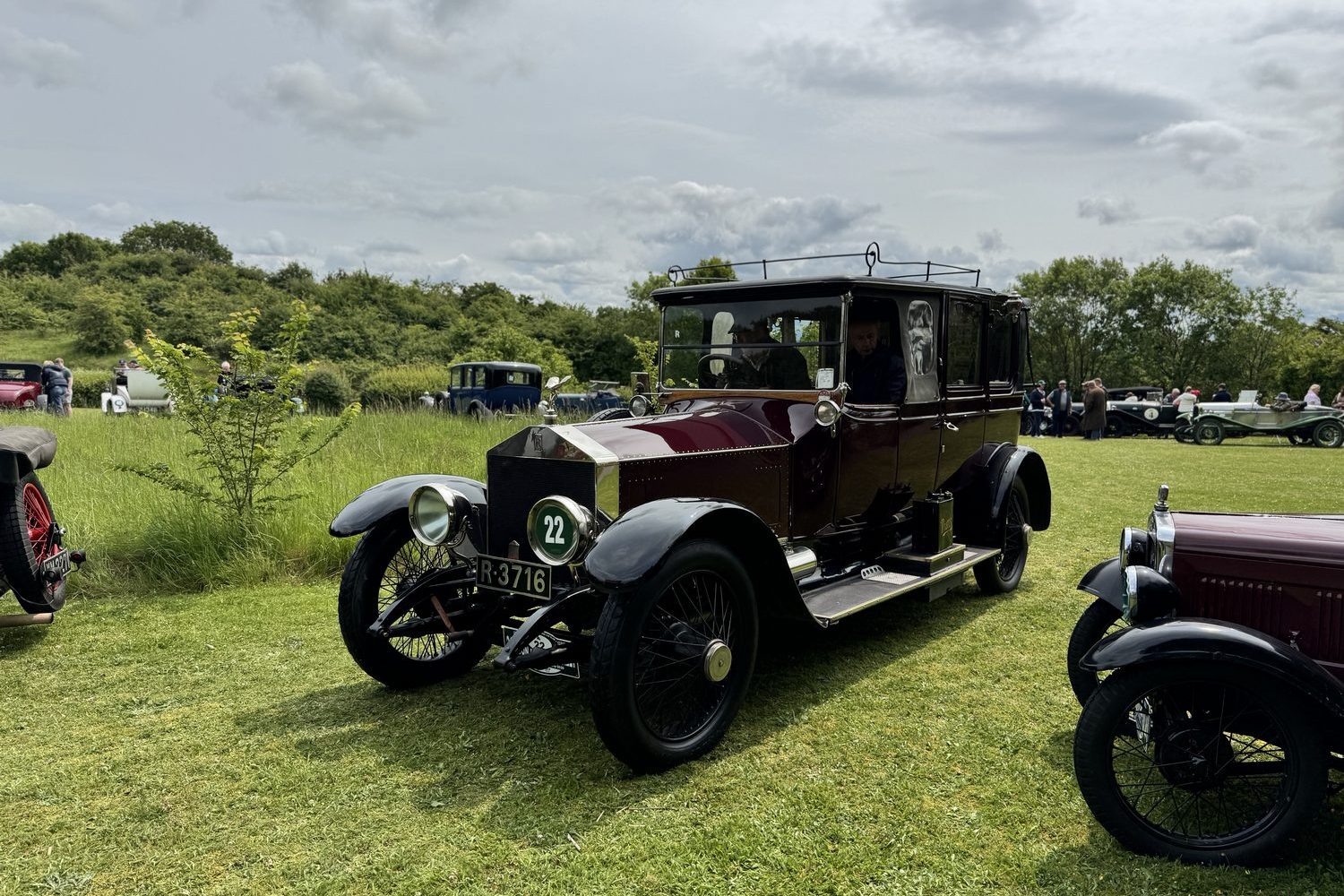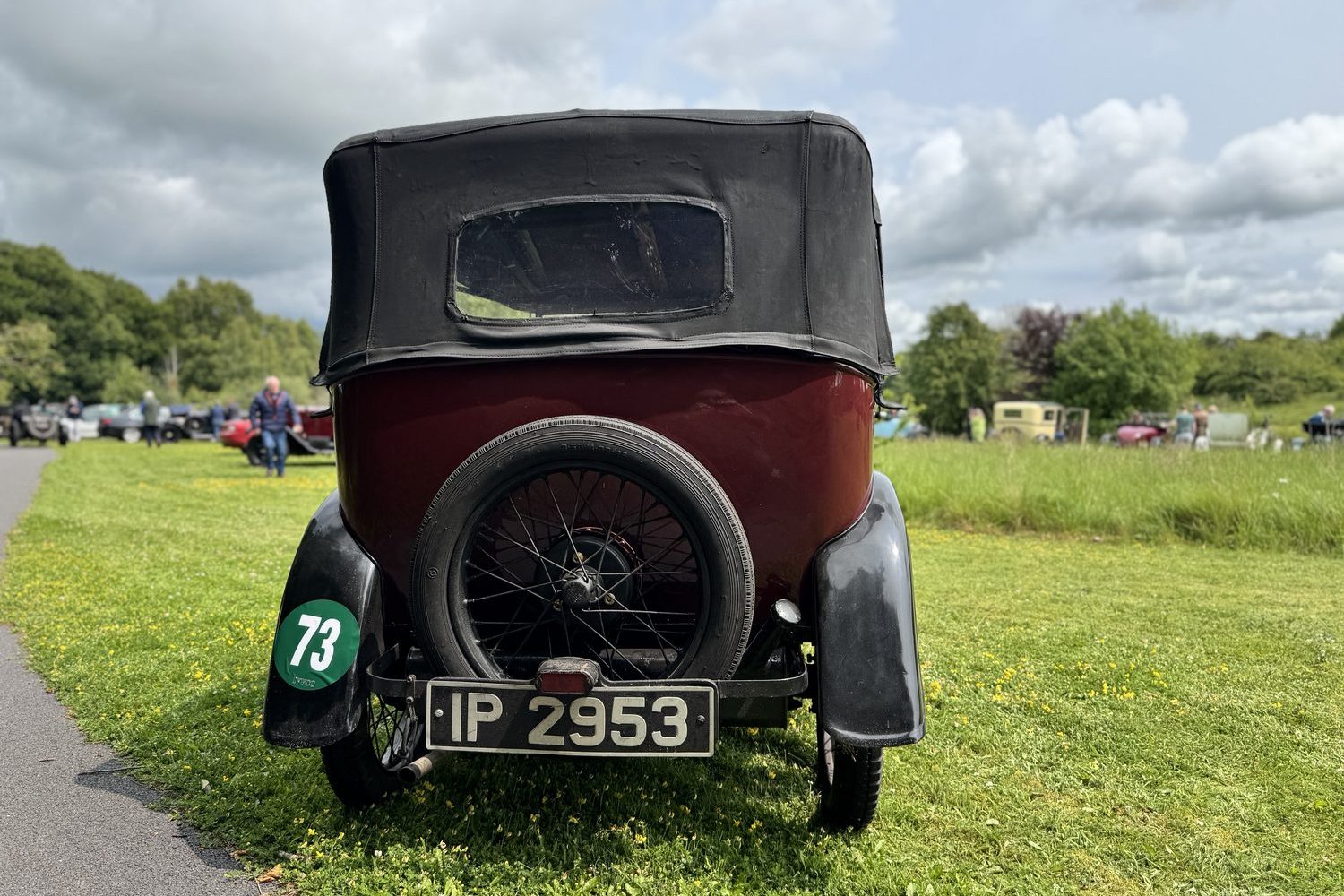It's a little intimidating when you squeeze into the tiny driver's seat of an Austin 7 and clock that just in front of you is the towering radiator of a 1929 Bentley 3-Litre Tourer. The big Bentley, its chrome trim gorgeously patinated to an almost bronze hue, has many times the power of the dinky little 750cc engine which sits, almost like a plumbed-in Corn Flakes packet, under the bonnet of the Austin. However, thanks to the arcane rules which govern the running of this event, the big Bentley carries no advantage...
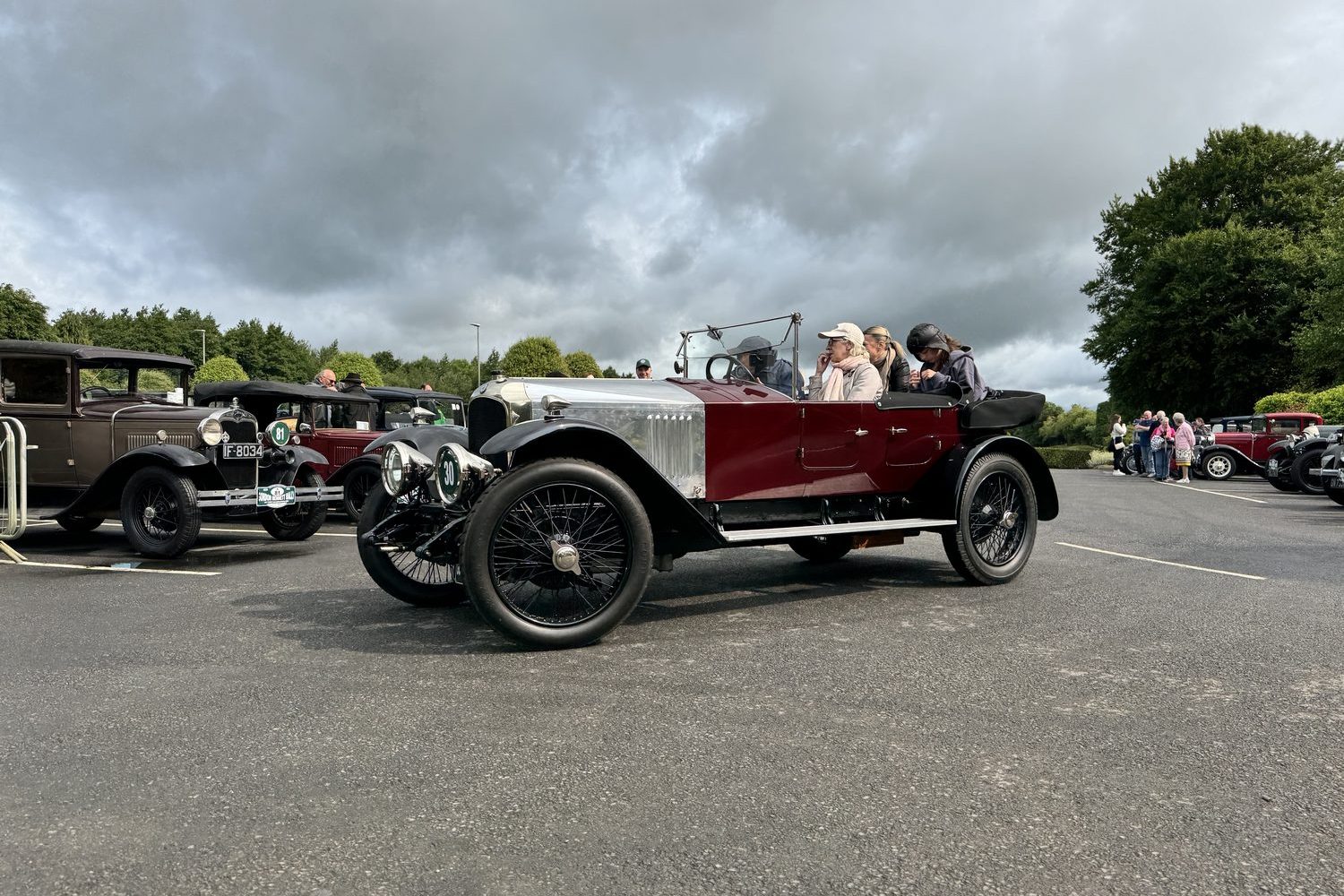
This is the International Gordon Bennett Rally, organised every year for the past 49 by the Irish Veteran and Vintage Car Club (IVCC). Unlike most classic car events, which consist of a gentle drive from somewhere nice to somewhere else nice, the Gordon Bennett is a proper, competitive event and one that's held on public roads.
In that, it's a direct continuation of the original Gordon Bennett race of 1903. That event was the first motor race that we would recognise in the modern sense. Prior to that, races - including the early events sponsored by newspaper magnate James Gordon Bennett, had been run on roads leading from one major city to another.
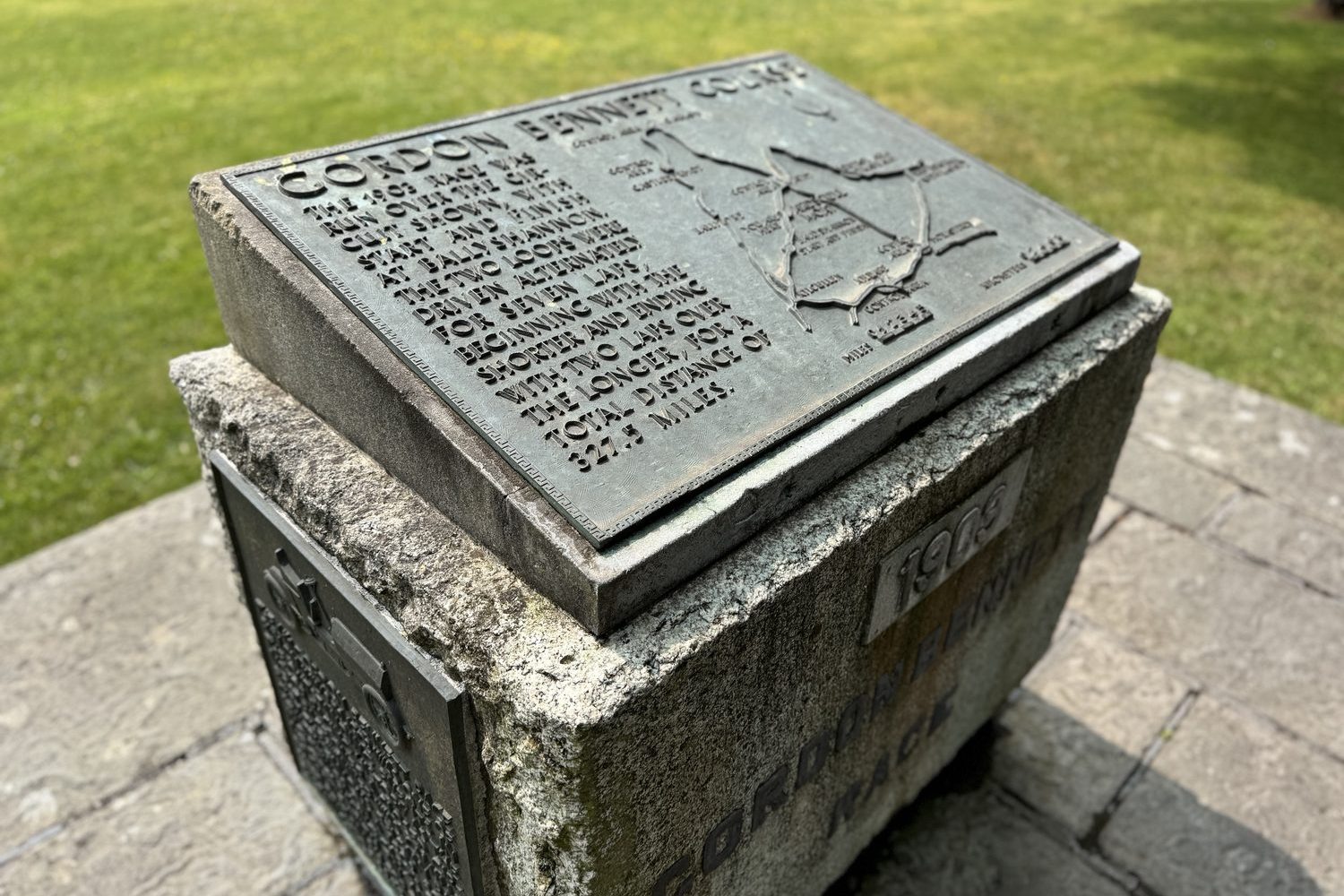
However, a series of disastrous and lethal accidents on the most infamous of these events - the Paris-Madrid race which claimed the life of no less a motoring luminary than Marcel Renault - the racing organisers decided that a new format would have to be found, one which would include a closed-off circuit of roads, on which a series of laps would be driven. Sound familiar?
The wrinkle was that the UK, due to hold the next major international Gordon Bennett event, was ruled over by an act of Parliament that forbade racing on public roads. However, Ireland - still technically part of the UK in 1903 of course - had no such rule, and in fact still doesn't and that's how we still have major rallies around the country.
Anyway, Ireland was chosen to hold the event, and a circuit of roads running from Carlow to Athy and back was chosen. This being the early pre-sponsor days of motor racing, teams ran in national colours, and the British team painted its Napier racers in a dark green in deference to Ireland holding the event.
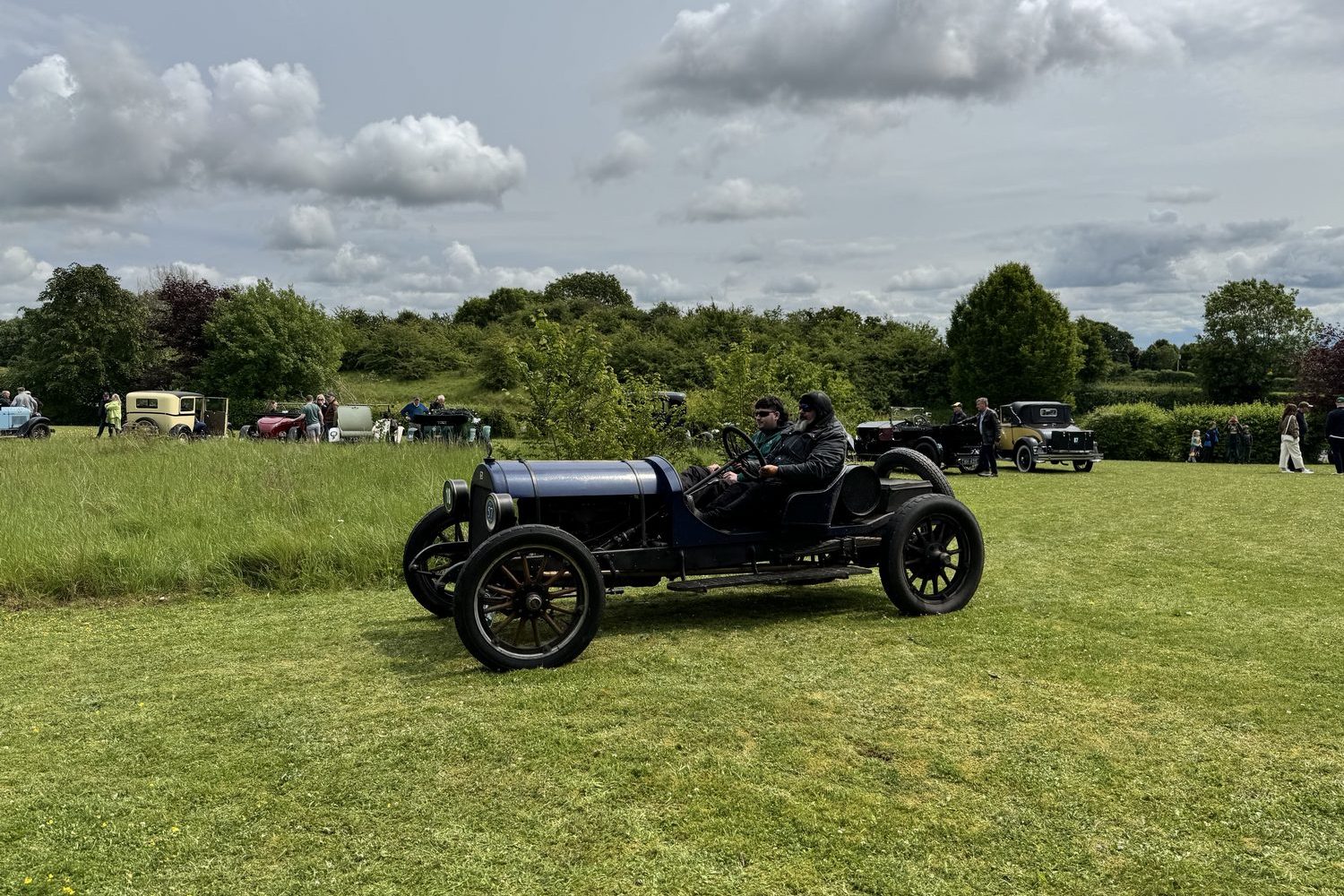
Thus was British Racing Green born, although it didn't prove lucky: event favourite SF Edge crashed out of the race (thankfully unhurt) and that left the way clear for Belgian driver Camille Jenatzy - all flowing red beard below his goggles - to come through in an early Mercedes racer to take the win.
The modern-day Gordon Bennett Rally follows some of the original route, but spears off onto small country roads, and away from the modern-day M9 motorway that now covers some of the course. That's in deference to the performance of the cars, which run in two speed classes - 18mph and 24mph.
Those are the average times to which you have to keep in order to pass the timekeepers at the right point, a regularity trial format which allows the event to continue to take place on public roads. It's motor racing, but without the peril nor danger.
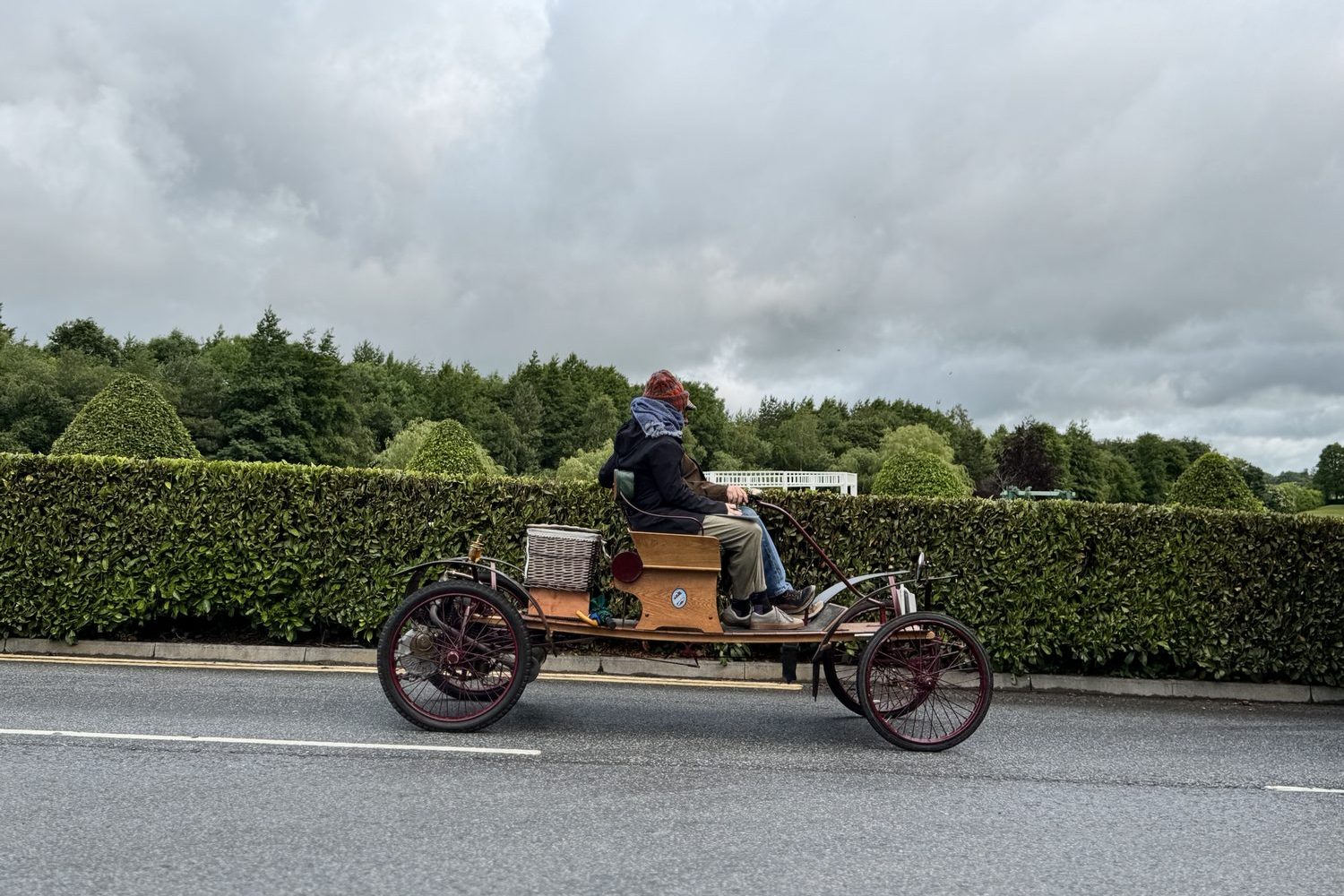
Not without the competition, though, and at the driver's and navigator's briefing before the off, many are frantically scribbling notes and running highlighter pens over the route book, which consists of distances in miles, both accumulated and interval, and spidery 'tulip note' graphics to show you what direction to take at each junction.
Some of the competitors are former full-on rally winners in priceless vintage cars, but I'm here with my 14-year-old son in an Austin 7 borrowed from Declan Grogan, president of the IVVCC, who's happy to loan me the car because he's keen to spark an interest in the younger generation. That's my son, not me, to be clear.
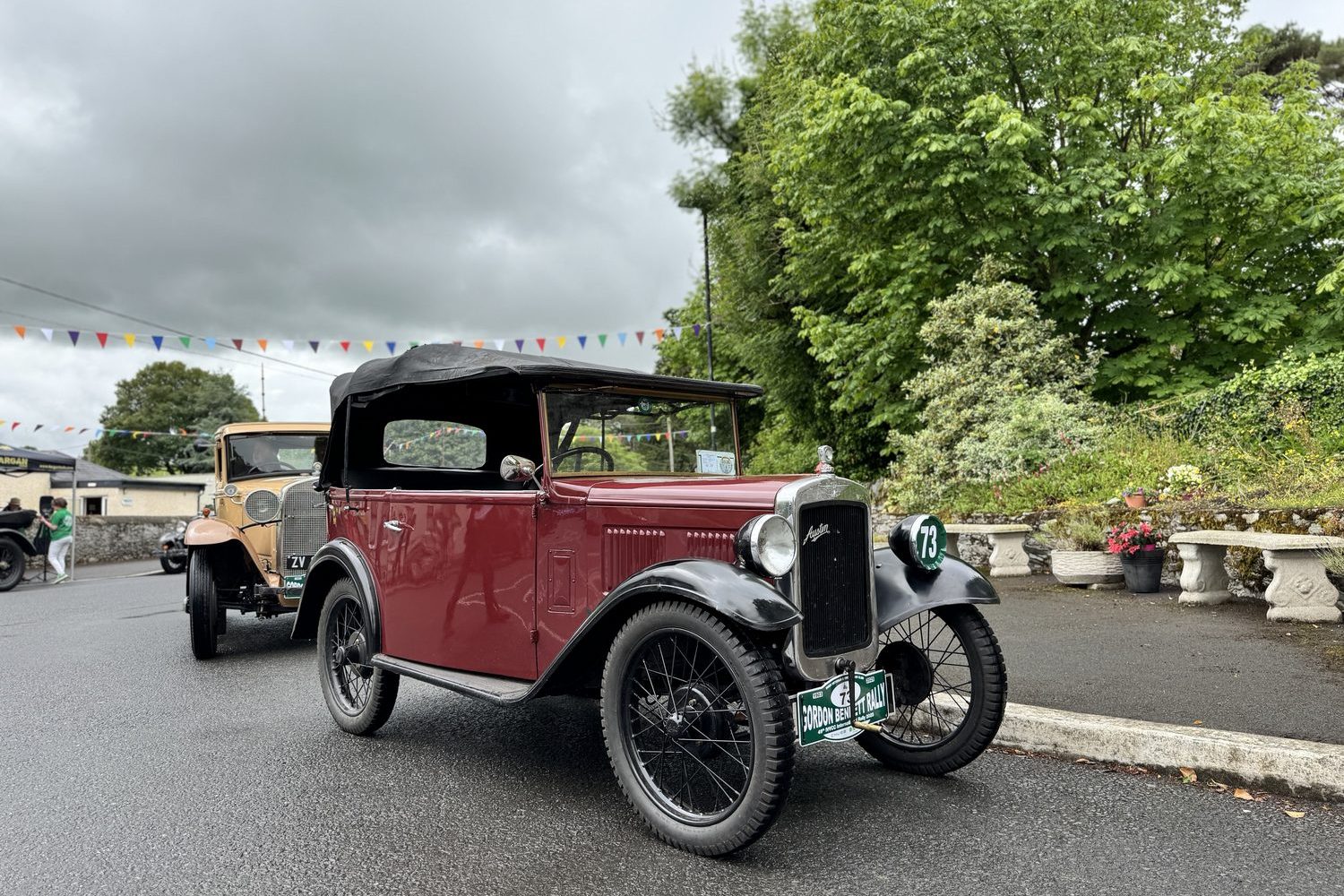
The hard part is that you have to know when to leave the start line, in the car park of the Mount Wolseley Hotel (yes, that Wolseley, or at least the same family) in Tullow, Co. Carlow.
Only the No.1 car is given a precise start time, and you have to work out at which of the following 30-second intervals you need to depart. Sounds easy - just divide your start number (we were car 73) by half and that's the number of minutes you need to wait. However, not all of the numbers had been filled, so there weren't necessarily 71 other cars between us and No.1. Best guess it is, then...
Guessing done, we snick the little Austin in first, and power away. Well, I say power. The Austin 7 is lively enough on a flat piece of road, but if there's any kind of an incline it starts to struggle more than a little. The 7 may just possibly have been the first production car to have come with a four-speed floor-mounted change and its clutch, brake and accelerator pedals in that left-to-right order, but there's no synchromesh in the gearbox, so changes have to be done with careful, judicious movement of the spindly gear lever, and with lots of double-de-clutching and heel-and-toe movements on the pedals.
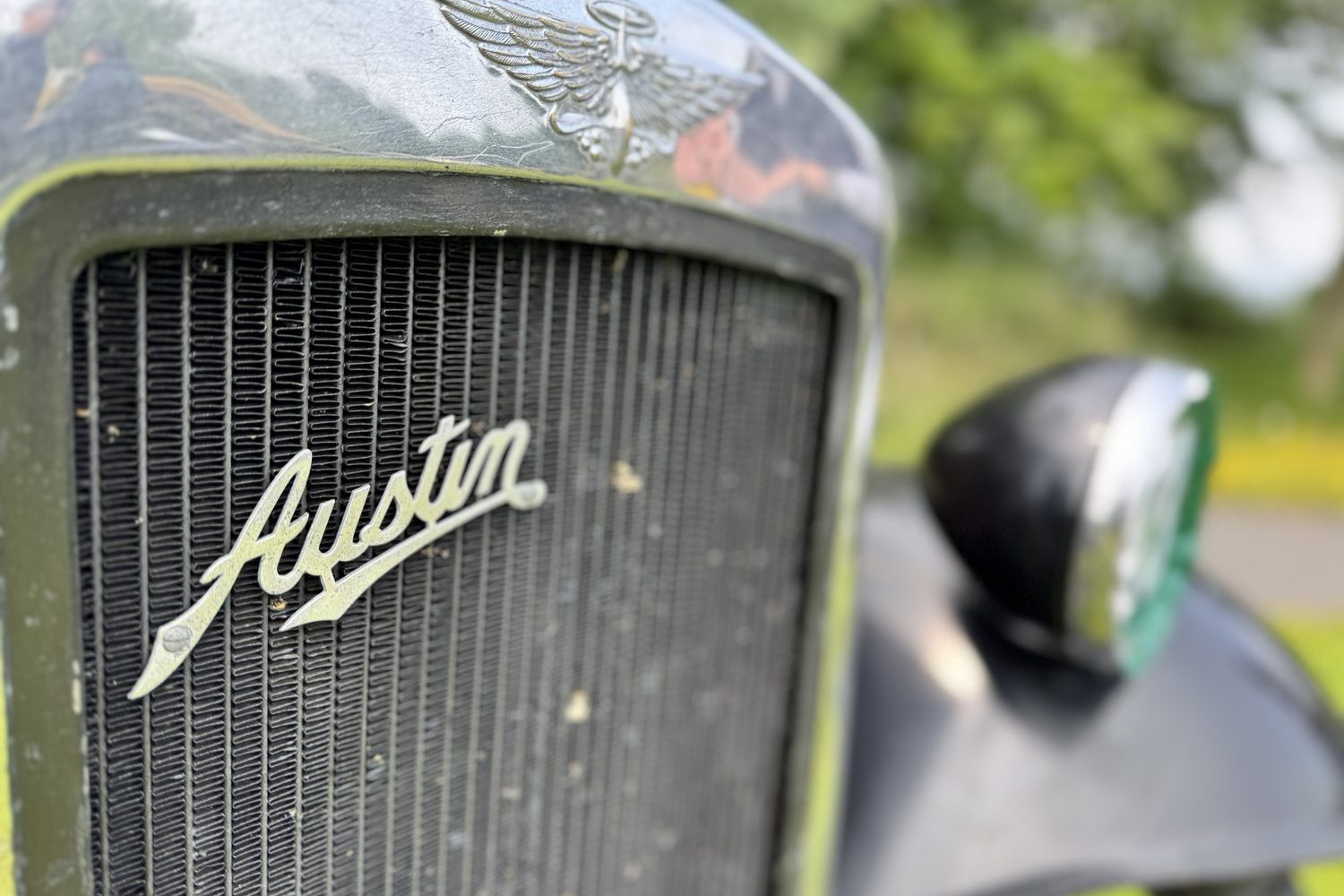
At this, I prove to be spectacularly rubbish, and manage to actually stall the little Austin in third gear on one steep hill, having to hill-start in first and proceed upwards like a tiny glacier.
Challenging it may be, although at least I didn't have to cope with the centre throttle pedals and outside gear levers of some of the other cars - but the Austin is astonishingly good fun to drive.
When we test modern cars on CompleteCar.ie we sometimes complain about cars that place too many barriers of refinement and technology between you and what's happening at the edges of the tyres. Well, the Austin never had those barriers in the first place, and in the 99 years since it was first built (our car is a 1926 example) no new barriers have been erected.
The steering is, of course, unassisted but only needs about a quarter-turn to shoot the little 7 through a 90-degree junction. The tiny, skinny tyres - more akin to what you'd see on a mountain bike - seem to find and lose traction and grip individually as you round a turn, and with the brakes (such as they are) causing a significant pull to the left, you can imagine how tricky it is to deal with a slow left-hand corner which requires you to change down at least one gear. An extra foot and three more hands would be helpful.
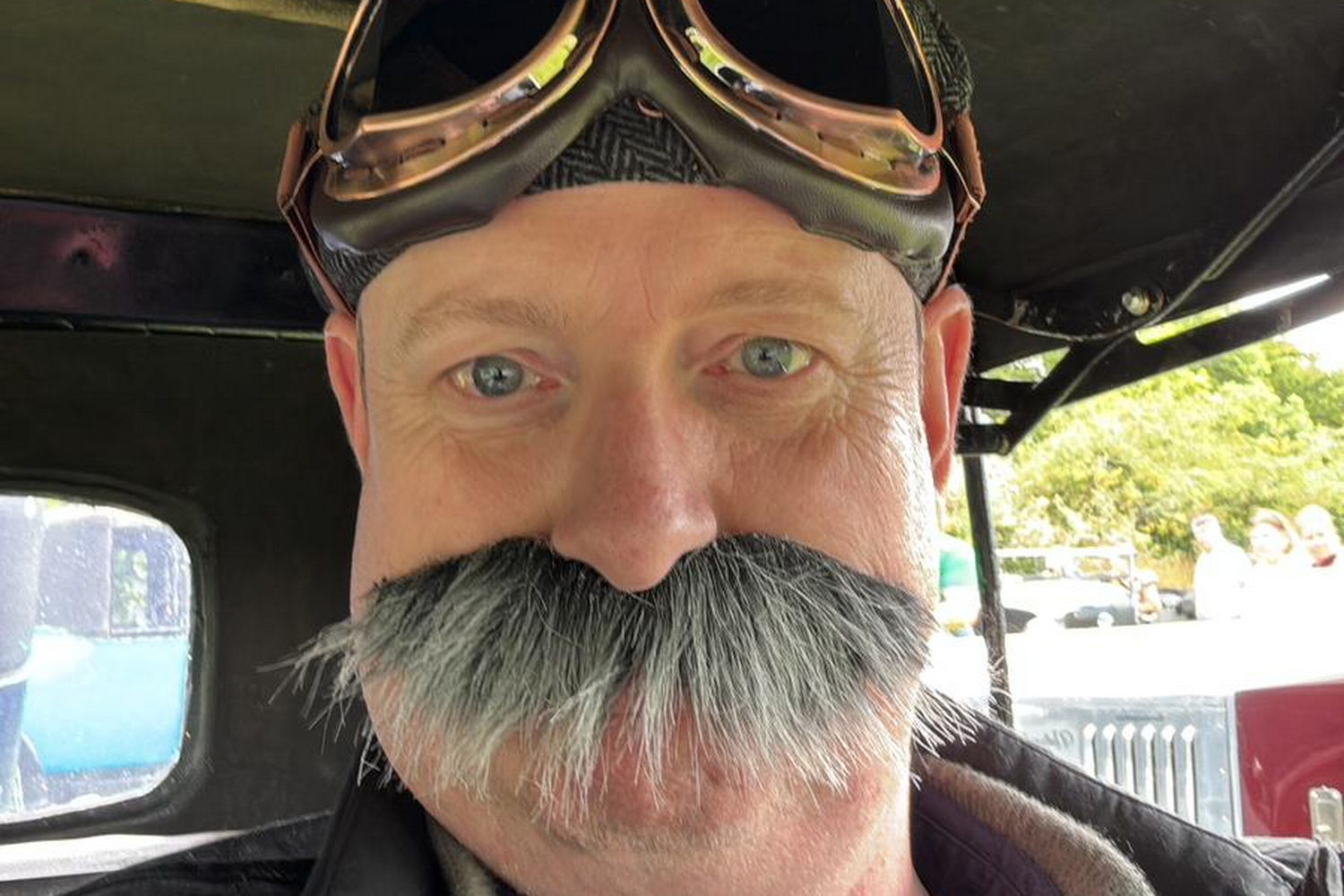
Thankfully, I had a great co-driver. My son, Ray, was not responsible for our best-guess start time - that was all my fault and led to a calamitous racking up of penalty scores as we wound our way through the regularity trials - but he was a fabulous navigator, getting us from junction to junction without deviation, hesitation, nor repetition.
Perhaps it helped that we wore flat caps, turned backwards and goggles (even though the Austin's windscreen, and its tiny, manually turned windscreen wiper rendered them unnecessary) to get into the spirit of Edwardian racing.
In the end, our collection of penalties left us close to the bottom of the entry list, but then that's not the point. The point is that we wrestled a car approaching its centenary through an event approaching its half-century in modern terms (and in its 122nd year if you consider it a continuation of the original Gordon Bennett) and it didn't suffer a single mechanical malady nor mishap.
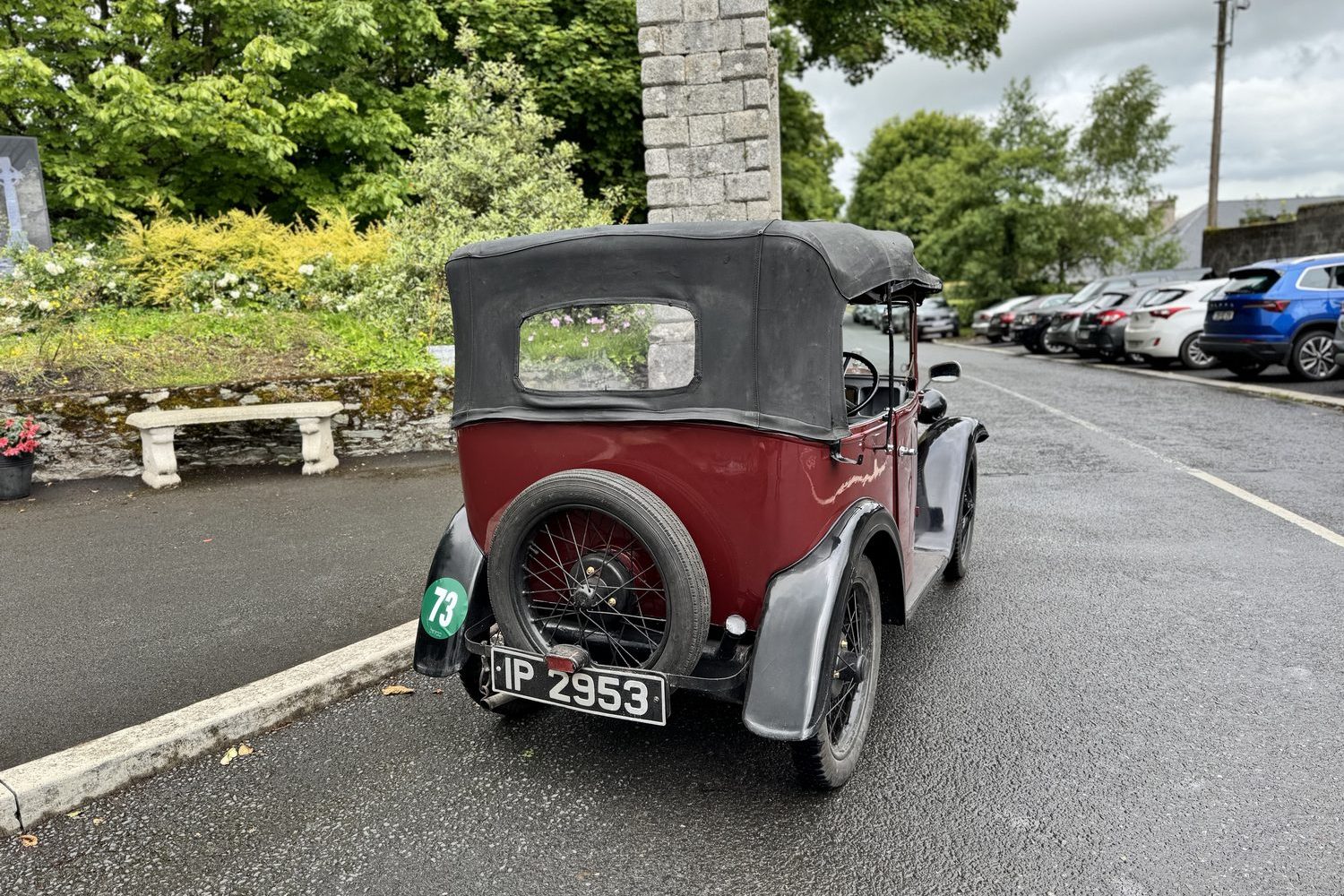
I'm not saying that I'm seriously considering buying an Austin 7 of my own as a potential daily driver, but neither am I entirely ruling it out.
The beauty of the Gordon Bennett is that it is entirely egalitarian. Sure, there were priceless Bentleys, Lagondas and Rolls-Royces entered, and you didn't have to look far to find plenty of old money sloshing about. Equally, we were one of about half-a-dozen Austin 7s entered, along with a batch of Ford Model Ts, more Ford Model As than you can shake a stick at and one solitary Leyland Trojan. The regularity timings make a mockery of power advantage, so we really could have competed head-on with that towering Bentley. If I hadn't messed up, that is.
It's not even an expensive event to enter - the fee is just €95, plus an extra €50 per head for the after-event dinner. If you're lucky enough to have a qualifying pre-1930 car, I can only recommend entering. You'll have a ball. Don't have the right car? Just wander down to the Carlow area on the first weekend in June and watch the field coming through.
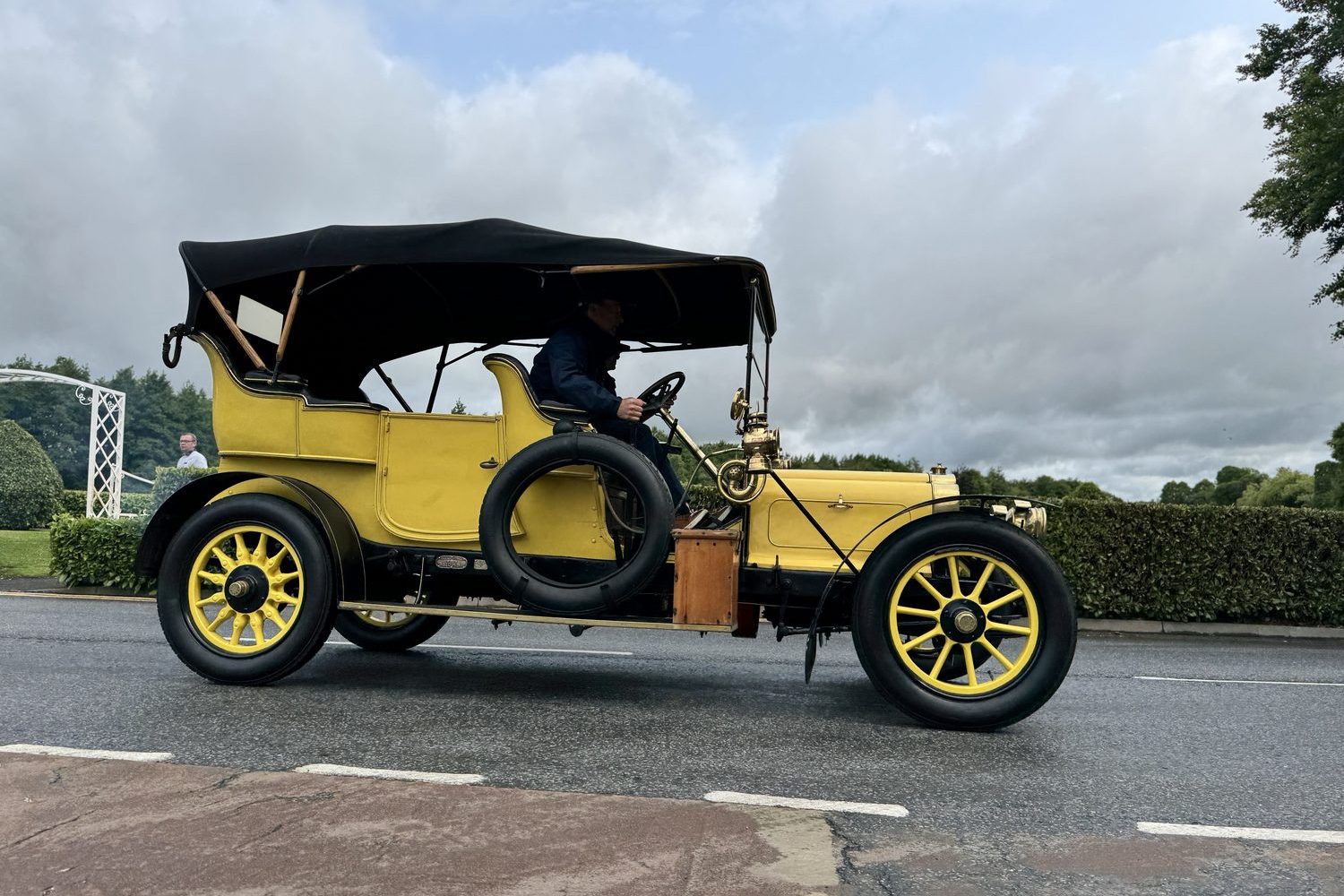
No-one will be going too fast, so you'll have plenty of time to appreciate the motoring history rolling before your eyes. Think of it as the Cannonball Run for kinder gentlefolk.

